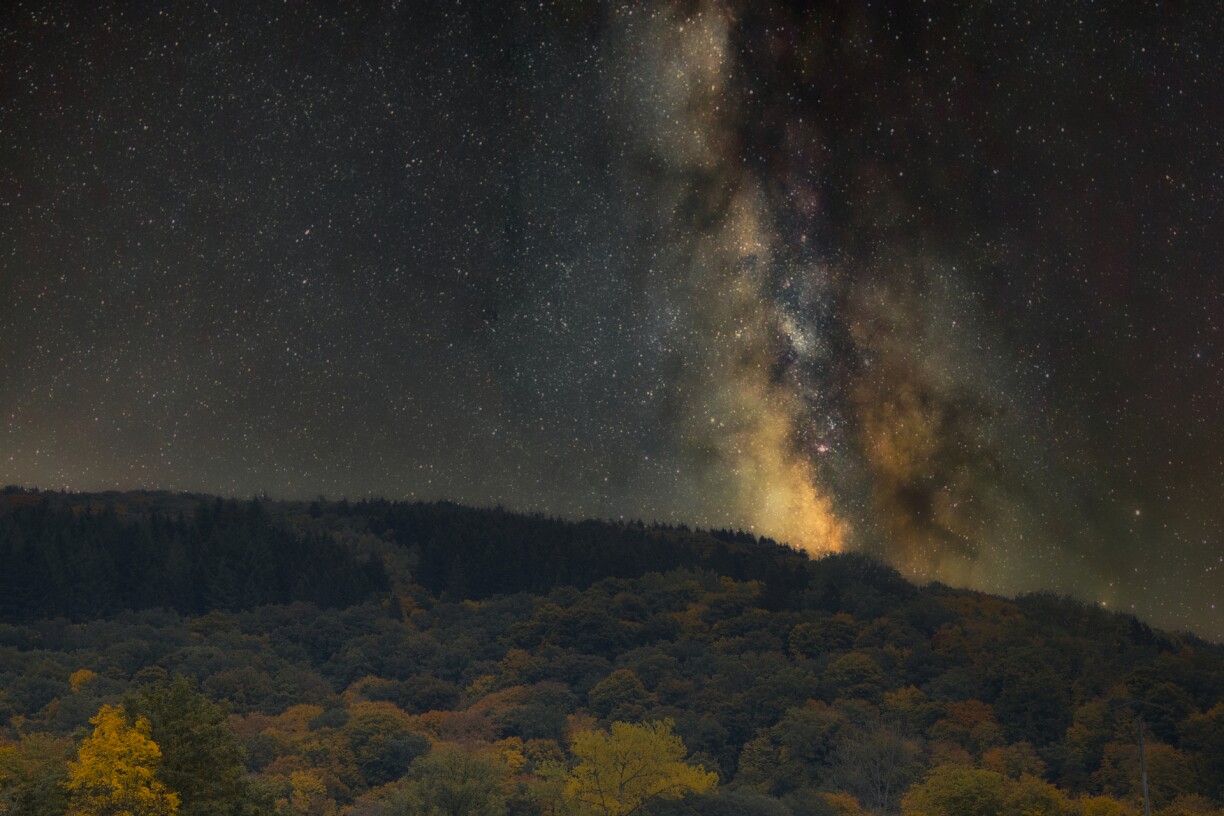
The high summer Milky Way has slipped west, making way for the bright constellations of winter while the Moon and planets take turns commanding the stage.
From the serene glow of the Beaver Moon to the swift trails of the Leonids meteor shower, the month offers something for everyone, no telescope needed.
Each November brings the return of the Leonids, a meteor shower that produced spectacular storms in the past. While no such storm is expected this year, the Leonids will still provide a pleasant show, peaking during the night of 17–18 November with up to 15 meteors per hour under dark skies.
The best viewing time is after midnight when the constellation Leo rises in the east. This year, the thin crescent Moon will not interfere much, making 2025 a good year to catch a few bright streaks of cosmic dust burning up high in the atmosphere. Find a dark, open spot, dress warmly, and give your eyes at least 20 minutes to adjust.
This month’s full Moon rises on 5 November and is known as the Beaver Moon. The name dates back centuries to early Native American and European traditions: it marked the time when beavers were most active building their lodges and preparing for winter, and when trappers once set their last beaver traps before the swamps froze.
It’s a name that evokes the changing rhythm of the season, a quiet, industrious preparation for the colder months ahead.

The Full Moon will bathe the landscape in pale light for a few nights around the 5th, perfect for night walks or photography. Two weeks later, the New Moon on 20 November will leave the sky at its darkest, giving an excellent opportunity to see stars, planets, and the Leonids meteor shower. The cycle ends with the First Quarter on the 28th, when the Moon returns to the evening sky.
That’s not all. The Moon in November will be quite busy. On 10 November, a waning gibbous Moon will pass near bright Jupiter in the early morning hours, forming a striking pair visible with the naked eye.
Then, on 18 November, just before sunrise, a thin crescent Moon will rise close to Venus, a delicate and elegant sight low in the eastern sky. Finally, as the month closes, the Moon once again approaches Saturn around 29–30 November, bringing a sense of closure to the lunar journey through the month.
Jupiter dominates the scene this month. Rising in the east as the night unfolds and shining brightly through the early morning hours, it’s unmistakable: a steady, golden-white light that far outshines any star. Even a small pair of binoculars will reveal its four largest moons, appearing as tiny dots aligned on either side of the planet.
Saturn stays visible in the southern evening sky, just after sunset, slowly descending toward the horizon as winter progresses. Venus continues to shine brilliantly in the morning twilight, a prominent ‘morning star’ rising in the east a few hours before the Sun.
November marks the slow handover between the autumn and winter skies. Overhead, the familiar “W” shape of Cassiopeia points the way to the Andromeda Galaxy, the nearest large galaxy to our own, faintly visible to the naked eye on dark nights.
To the east, the Pleiades star cluster sparkles like a tiny diamond cloud in the constellation Taurus, joined by the bright red giant Aldebaran. As the nights go by, Orion the Hunter climbs higher, his belt of three stars leading the eye toward the Great Orion Nebula below, a reminder that winter is coming, and with it, some of the most recognisable constellations of the year.
November nights are among the best for observing or photographing the sky; with warm clothes and some help from the weather this year we’re up for a great show.
Full Moon – 5 November 2025 (Beaver Moon)
New Moon – 20 November 2025
Leonids Meteor Shower – 17–18 November 2025
Main Conjunctions – Moon with Jupiter (10 Nov), Moon with Venus (18 Nov), Moon with Saturn (29–30 Nov)
Visible Planets – Jupiter (dominant in morning sky), Saturn (evening), Venus (prominent morning star)